Scott Cadence Plus: Aero Road Done Right
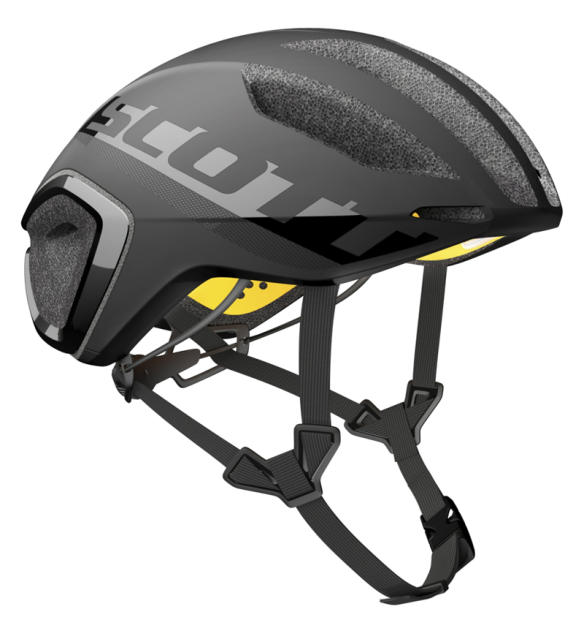
When I set out to do a review of aero helmets, I didn't intend to include any of what we've come to call "aero road" helmets; my goal was to focus on the TT helmets exclusively. But when Scott Sports wanted to send along their new aero road offering – the Cadence Plus – and I was actually eager to give a try for one simple reason – Sebastian Kienle decided to race in this helmet in Kona in 2016.
Sebastian is obsessive about his aerodynamics. He has a magnificent position. His bike is remarkably unencumbered by extraneous "stuff." And he's an early adopter of numerous products that promise an aero advantage; he was one of the first athletes to race in a sleeved skinsuit, something that is very much now the norm, and also one of the first to use aero shoe covers in an Ironman (something which he does not do at every race). So for Sebastian to choose this helmet over the Scott Split TT helmet, which he's ridden to an 8th, 4th, 3rd, and of course 1st place finish in Kona caused me to take notice. That he rode this helmet en route to a close second place finish and his fastest Kona – and one of the fastest Kona performances of all time – in spite of having a more "typical" swim for him really piqued my interest. I knew that Sebastian would not have made this decision lightly. If he chose to ride the Cadence over the Split, it was for a reason.
According to Scott's own static dummy testing, the difference between the Cadence Plus and the Split is between 4w and 2.5w at 40kmh depending on whether or not you have the aero plugs (more on that later) inserted. But in Sebastian's own velodrome testing, he found it to be only about 2w difference between the Split and the Cadence Plus without plugs at 45kmh. Apparently, though, even this small aero hit gave Sebastian pause, and he was on the fence about what helmet to ride all throughout the week of the race. Ultimately, he chose the Cadence because it's just a lot cooler (and lighter) than the Split, and pays only a very modest aero price.
Beyond the aerodynamics, the Cadence is simply a fantastic helmet. It fits well. It's extremely comfortable. It's well ventilated. And it looks good. It is, without question, the best road helmet I've ever used, and I think it ought to be on the short list for anyone looking for a fast helmet for use in hot conditions.
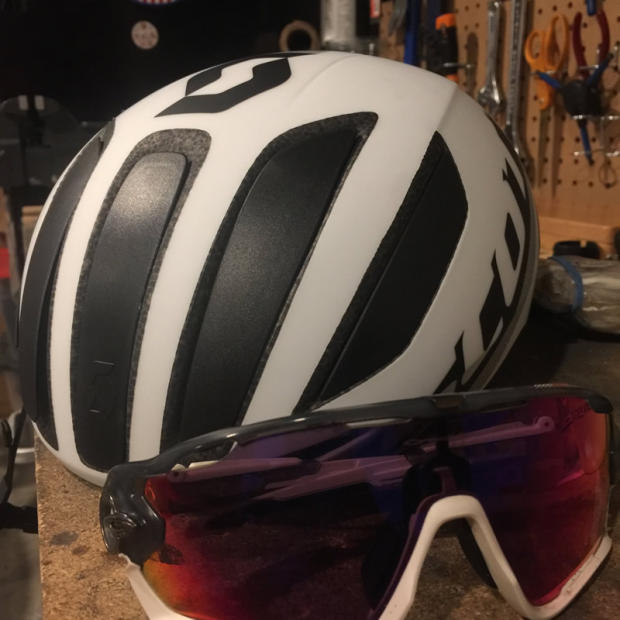
The Plugs
One of the most unique features is that it comes with a set of five plastic-and-styrofoam plugs, each of which is custom fit to fill in one of the five vents on the front of the helmet. You cannot use these for UCI racing, but they'd be perfectly legal for triathlon. While Scott says they offer a marginal improvement in aerodynamics, I don't actually think they are worth it.
The plugs make the helmet both hotter and louder. The plugs offer some great insight into one of the fundamental aerodynamic truths – the air must go somewhere. If the air cannot flow through the helmet, it will flow around the helmet. With the plugs in, the Cadence is much hotter. That's to be expected. What's especially interesting is that the helmet also becomes a lot louder. We've had some rare cool-and-rainy days in LA lately, and I decided to pop in the plugs to test them out. Without the plugs in, the Cadence has very nice airflow through the helmet. With the plugs in, there is absolutely no airflow of any kind. Theoretically, I suppose you could run one, two, three, or four plugs instead of all five to give yourself a bit of airflow, but I really don't see why you would. The plugs offer – according to Scott's dummy testing and pretty much confirmed by Sebastian's testing – only 1w or less in savings. And they make the helmet worse in pretty much every regard. Even in a very cool race, I'd still rather race with the helmet vents open because with the vents closed, sweat inevitably ends up on your glasses. And also because wind noise is a lot higher with the plugs in. The Cadence is, without the plugs, a quiet helmet. No whistling or other quirks. But with the plugs in, that air gets pushed over your ears, making the helmet rather loud. Annoyingly so.
Ultimately, from an aerodynamic perspective, I just don't see the plugs as being worth the tradeoffs. Maybe if you're riding in the rain or really cold weather. But the drag savings just don't offset the other negatives. Sebastian didn't race with the plugs in, and I can't imagine anyone else making a different choice here. I applaud Scott for being pretty up front about the savings (or lack thereof) with the plugs. I'd say they might make sense for a cycling sprinter trying to squeeze out every fraction, they aren't legal for UCI racing.
I don't know that I'd go so far as to call them a gimmick, but I also wouldn't stress about losing them. On the bright side, they pop in – and out – really easily, so if you want to test them in any variety of configurations, it's super easy to do so. Everything has a cost, though, and with the Cadence Plus ringing in at almost $250, I have to wonder if it wouldn't – overall – just be a better decision to leave out the plugs and to shave a couple of bucks off the price.
[Update 2017.01.16] Scott informed us that, as of now, the UCI has approved the plugs.
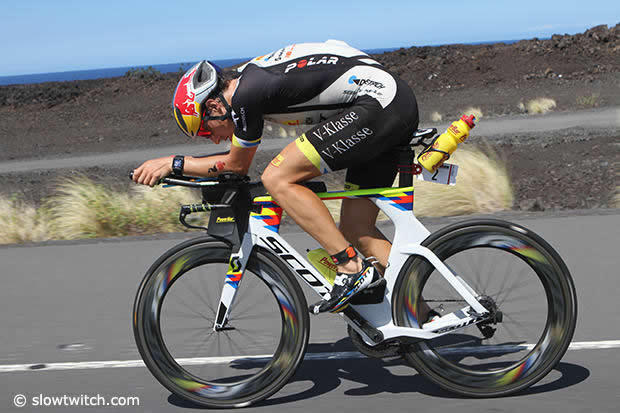
Weight
The traditional argument in favor of aero road helmets over traditional TT helmets has almost exclusively focused on cooling. Road helmets are better ventilated, they don't cover your ears, and – in theory – should help keep you a little bit cooler in hot conditions. But I believe that the lighter weight of the aero road helmet is almost as important as the ventilation. And, in certain conditions, it might even be more important. Keeping your head still for 112mi is tough work. This is a big part of the reason for the shift to shorter tailed TT helmets. The long tail can be a real problem if you drop your head, something that you're more likely to do as you become fatigued, which is even more likely if the helmet is heavier.
In my incredibly un-scientific experience, I've raced in an aero road helmet (Specialized Evade) twice. Once at Vineman in 2013 and once at Ironman Arizona that same year. In both cases, I noticed a big difference in the reduced strain in my neck as compared to the quite long and heavy Specialized TT helmet (the old long tail version). And I ran better than I "should" have in both cases. In neither of these races was temperature an issue. In fact, at Vineman, I would have preferred a warmer helmet. But in both cases, I felt my posture coming off the bike was improved versus the TT helmet.
Sebastian had been running extremely well all year leading into Kona last year, setting substantial PRs in both Ironman and 70.3 races on the run. So it's no surprise that he had his first sub-2:50 run in Kona. And I would by no means attribute that entirely to the use of the Cadence over the Split. With that said, given just how fast the Cadence is aerodynamically, the fact that it is both cooler and lighter than the Split makes it pretty darn appealing.
Without plugs (which are essentially negligible anyway at 22g), the Cadence weighs a paltry 280g for a size Medium on my scale (vs the Scott reported weight of 270g). That's a massive difference from the values we see for TT helmets that can be 400g+ (albeit with a visor). It's 90g lighter on my scale than the Split. While I wouldn't sweat this sort of weight on the bike itself, when it's weight hanging on your head, that makes a difference. And the weight here is competitive with helmets built without a focus on aerodynamics. 280g is just a light helmet.

Aerodynamics
As with these other reviews, my focus here is not to evaluate the aerodynamic merit of these helmets. Sebastian's own testing on the velodrome supports Scott's reported dummy testing done by Dr. Richard Kelso of the University of Adelaide. The biggest note that I want to make here is that it's interesting that the plugs don't make a bigger impact on the overall aerodynamics. And that the plugs actually have some detrimental effects that are the result of aerodynamics. The helmet is obviously louder with the plugs because it pushes the air down around your ears rather than having it flow through the helmet. This resonates with a lot of the claims I've seen made elsewhere that a well-designed and ventilated helmet can actually be more aerodynamic than a helmet without vents. The traditional thought process has been that ventilation is slow. What the Cadence shows is why that is not necessarily so. The air must go somewhere, and sometimes the fastest place for the air to flow is through the helmet rather than around it.
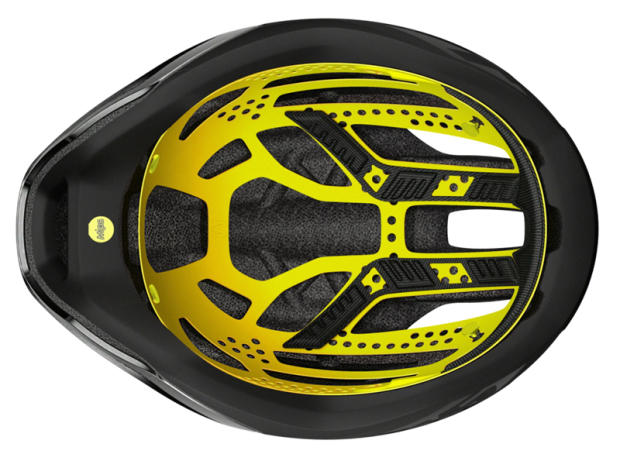
MIPS
For those who are unfamiliar, MIPS is an acronym that stands for Multi-directional Impact Protection System, which is also the name of the Swedish company that owns the proprietary technology. The idea of MIPS is that you build helmets with a liner that can "slip" in the event of a crash, reducing rotational forces on the head. The idea is that if you hit off center, MIPS allows the helmet's shell to slide around your head (slightly). You can get an idea of how MIPS works watching the video on the MIPS site.
MIPS is one of those ideas that seems like a no-brainer (sorry). Except it's not entirely clear that it works. Early on, I had a discussion with a helmet designer at a major company (not on the record and it was a while back, so I wouldn't feel comfortable attributing the same stance to him now) where he said that it just wasn't clear that MIPS actually was any more effective at preventing injury. It was one of those, "it's good in theory but less clear in practice" arguments. He wasn't against MIPS. He just wasn't sure it was worth the additional cost and complexity.
His arguments basically echo exactly the sentiments of the Bicycle Helmet Safety Institute site. To quote, "In the meantime, do you need MIPS? Using careful evaluation, we can't answer that. It probably won't hurt, other than any effect on ventilation, of if your manufacturer has kept the same outer profile and reduced the thickness of the normal liner to accommodate the MIPS layer, or if it lets the helmet slip too much, or if the extra cost of the MIPS model makes a difference to you. We do not see compelling evidence that you should trade in your current helmet on a MIPS model unless having the Latest Thing is important to you." Scott mitigates one of the criticisms of the MIPS liner – that it's hotter – by perforating it. All in all, I simply don't know enough to do anything more than provide the insights of folks way more knowledgeable than I.
The general consensus seems to be that MIPS helmets are almost certainly not less safe than a helmet without MIPS, but that they also might not be more safe either. Given that MIPS pretty clearly increases the cost of a helmet, again, I think it's debatable as to whether or not MIPS is a positive or a negative. Specialized, for instance, sits a bit more on the fence here. Their AirNet helmet comes in both MIPS and non-MIPS varieties, with the non-MIPS version being cheaper by $20. Again, as with the plugs, I think this might be a way to drive the cost of the Cadence Plus into less rarified territory. No plugs and no MIPS doesn't – to me – fundamentally change what makes this helmet great, but it sure could make it cheaper.
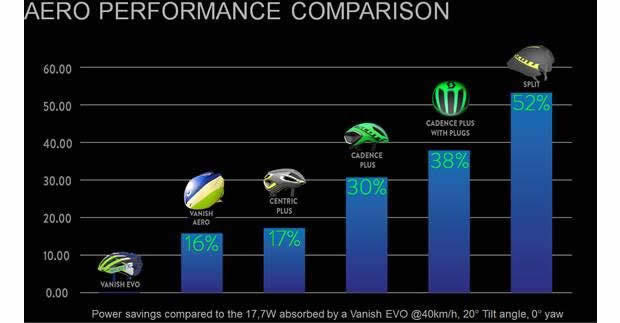
Chin-Strap
The ear straps are a bit more cumbersome to adjust on the Cadence than on those helmets which have a dedicated locking slider. The ear straps are also separate from the chin strap. So there's no easy way to totally shorten these up. Then again, this is sort of one of those things where I think that you don't really need a ton of adjustment. You can certainly easily adjust the length fore-aft to basically tilt the helmet up or down on your head, but I think most people will probably never touch them.
The chin strap is a very typical design, though I did find that it was prone to slipping and becoming looser over time. I ended up doubling over the strap a couples times and wrapping it with a piece of electrical tape to hold it in the position I wanted. It certainly never became drastically more loose than how I had set it, but at the same time, I feel like the cleat on the male strap could have been a bit tighter and more secure. Given that this tends to be a set-it-and-forget-it part of the helmet, I think making it harder to adjust but more secure once adjusted is advisable.
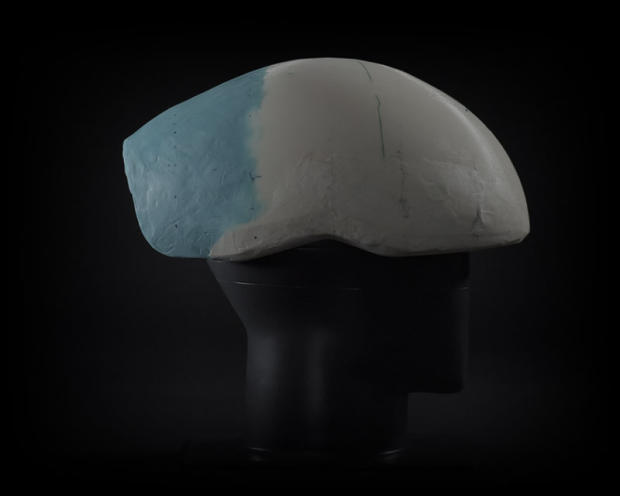
Retention Dial
The retention dial is well textured and easy to grip and has a nice, robust, precise click when you adjust it. It makes nice small adjustments to really dial in the fit. The anchors for the retention system lock into the helmet just above the temple and can be adjusted up/down here. This is in contrast to most helmets I've used where the retention dial height is adjusted further back in the helmet. I can't speak to the logic (or illogic) of this design, but the Cadence is, without question, an incredibly comfortable helmet. I can't actually imagine that it could fit any better.
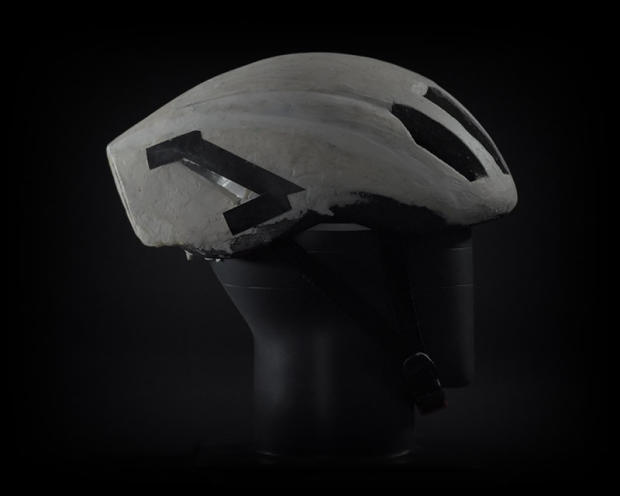
Overall Comfort and Fit
Other reviews of this helmet really focused on the attention that Scott paid to the fit of the helmet. According to CyclingTips, Scott mapped the nerves and arteries of the skull in an attempt to be more thoughtful about where they placed the various anchor points of the retention system. While no helmet works for every head, I found the Cadence to be extraordinarily comfortable. This is, without question, the most comfortable helmet I've ever worn. It's easily my favorite road helmet ever. And that's not even considering the fact that it's really, really fast.
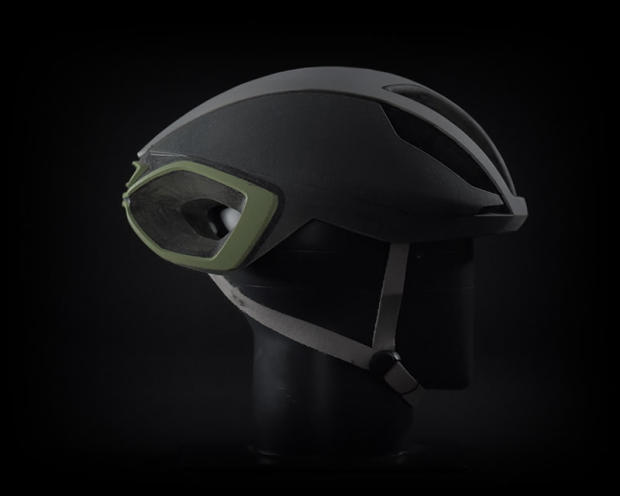
Aero Road Helmets as a Category
I've always viewed aero road helmets as a compromise category. I thought they were a good choice for certain races and certain positions. But I always thought it was a tradeoff. Not necessarily a bad tradeoff, but certainly one where you were giving up something objective – speed – for something more subjective – comfort. The Cadence may force me to reevaluate that position. Aerodynamically, it's competitive with Scott's well-designed Split TT helmet. But it's much lighter and much cooler. I was honestly shocked to see Sebastian Kienle race Kona in a road helmet. But after spending some time with the Cadence, I can see why. This is just a great helmet. Scott set out to design the fastest and most comfortable helmet they could from the ground up. The Cadence was not based on any previous design. It started as a blank canvas. The final product has to have exceeded their expectations. This is, simply put a great helmet.

Scott Cadence Plus (white/black/grey/green)
MSRP: $250
Weight: 270g (manufacturer). 280g (measured).
Certifications: CPSC, AS, and CE


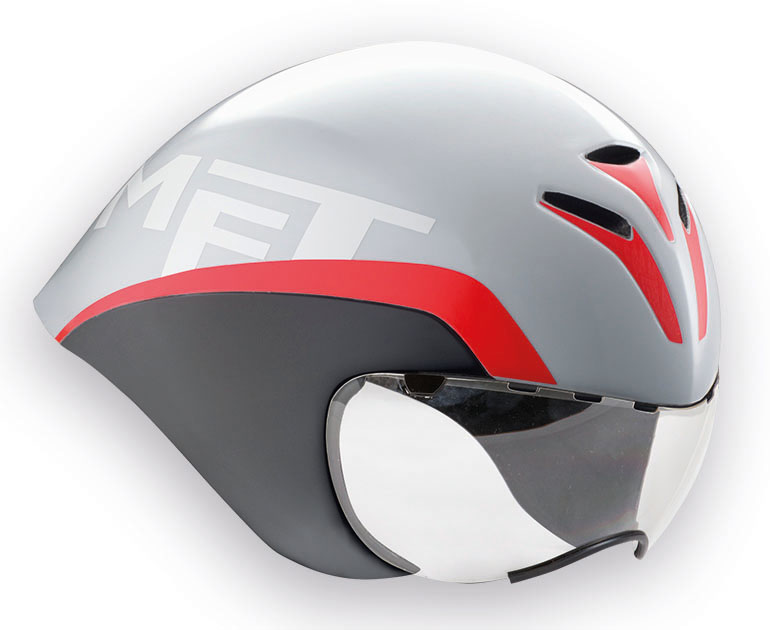
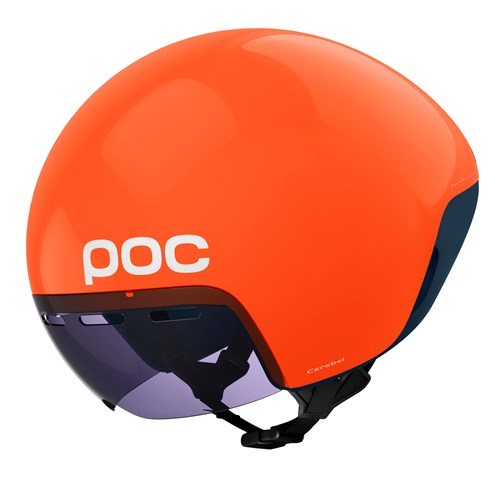
Start the discussion at slowtwitch.northend.network